If you have an interest in psychology, neuroscience, and human behavior, this book offers a unique perspective on how our subconscious mind shapes our actions and decisions.
If you want to explore the hidden forces that drive human behavior, this book can be an eye-opening experience.
Introduction
Today we will discuss the book, Subliminal: How Your Unconscious Mind Rules Your Behavior, in which we will learn how our unconscious mind rules our behavior, written by Leonard Mlodinow.
Do you know how we make decisions? Do we form our opinion keeping all the facts in front? Or make decisions with the suggestion of your subconscious mind?
We are going to understand all this in detail in this book. Instead of making decisions based on facts as a conscious person, we go by our subconscious mind. Our subconscious can inspire us to do strange things. This book summary will help you understand life’s critical questions.
Thirteen such ideas have been told in the book; by understanding, you will understand how the subconscious mind works.
Idea 1
Many theories tried to understand the subconscious mind, but modern techniques finally exposed its complacency.
For centuries, philosophers have speculated about the nature of the subconscious mind. For example, in the 1700s, Immanuel Kant pointed out that our mind does not experience objective realities.
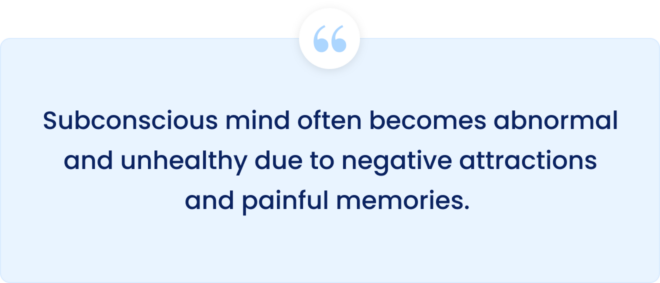
Instead, it creates its reality. In 1900, Sigmund Freud explained one explanation of the subconscious mind, which became famous. Freud stated that the subconscious mind often becomes abnormal and unhealthy due to negative attractions and painful memories.
However, at that time, it wasn’t easy to unlock the secrets of the subconscious mind. Later, the research began to move into other areas, and many scientists began to argue that humans were like animals with complex brains but understandable machines like computers.
However, by the 1980s, new research rekindled our interest in the subconscious. And at the same time, new technology has finally enabled us to understand the process of formation and functioning of the brain. Functional magnetic resonance imaging technology allowed neuroscientists to scan the brain’s structure and blood flow changes with 3D precision.
This information has helped us a lot in understanding the subconscious. From this, we know about the three interdependent layers of the brain. The most profound and oldest layer is the reptile, responsible for breathing, eating, and fighting or flying instincts.
Then there is the second layer. This part has the sophisticated older mammalian or limbic system, which is responsible for subconscious social perception, how you think and behave in society. Above this is the neocortex, which promotes goal-oriented actions and conscious thought.
It is also associated with the expression of gaze, fingers, and facial expressions. It is found in abundance in us humans.
Idea 2
The subconscious mind collects raw data from our senses and summarizes it for our conscious mind.
If you hear a loud, sudden bang, you’ll likely react quickly and try to defend yourself. This is because when your subconscious mind senses danger, it automatically works to protect you from danger. This subconscious awareness of the environment developed long before the conscious understanding of our ancestors.
Its primary goal was to keep us alive, avoid threats, and find food and mates. Our subconscious mind collects this data from all our senses and uses it to keep us safe.
A great example of this is light. Whatever we see using the light received from the eyes is transported and processed in a small part of the brain called the visual cortex. But even when people’s visual cortex is damaged, the subconscious mind helps us to recognize things visually.
This is called blindness. For example, a person who has had a stroke and has gone blind has damage to both the visual hemispheres and the seeing cells of his brain, yet his eyes still usually see, and his subconscious mind still knows about it.
He was capable of using it. The researchers found that the man could judge whether the face shown to him was happy or angry. And he could do it without any obstacles.
But the details our subconscious mind receives from the senses still need to be completed. Our conscious mind is also involved in converting it into information. The subconscious mind filters all the basic impulsions, and then the conscious mind makes decisions based on them. For example, we have a blind spot in both eyes where cells connect the eye to the mind.
Our eyes also unconsciously jerk here and there many times every second. Sometimes too much, sometimes too little, and sometimes with focus, sometimes a little less. This way, you will notice irregularities in the eyes. But the subconscious mind collects the information from both eyes to make a clear image of the things seen. It takes conscious decision thinking automatically from the old data and experiences.
Idea 3
Body language allows us to interpret the behavior and opinions of others unconsciously.
Our body is as expressive as our words. With body language, we can understand the intentions of other human beings. For example, we used body language to signal possible threats, friendships, and relationships.
We have inherited the concept of body language from our ancestors, and it is as natural and necessary for humans as it is for other living beings. For example, we prefer to be calm with our brothers and sisters and give similar signals through body language while being defensive with others.
Similarly, weak monkeys open their teeth to avoid attacks from more powerful monkeys, while chimpanzees signal by smiling, i.e., showing teeth that they are not a threat to others.
Smiling is also an essential signal for humans and cannot be faked. To smile, we need to transfer the muscles on both sides of the mouth and the area around the eyes, which is done for some purpose only. We cannot do it deliberately here and there.
Not only does this reveal genuine or fake laughter, but facial expressions are natural during genuine laughter. Tribes worldwide identify the face of fear or hate similarly. However, body language is not limited to expressing social signals.
Through this, we communicate our expectations to people and influence their behavior without intention.
Idea 4
Small changes in our voice promote our attractiveness to others and show the nature of our character.
Many explain evolution by saying men want dominance and sex while women want faithful partners and children. Its result is reflected in our body language, especially the tone and pitch of our voice. Men and women unconsciously adjust their voices for sexual success. In a research, a group of men competed for a date with a woman.
The results showed that when a woman started talking to a man, he felt more powerful than his competitors. In this way, men raised and lowered the pitch of their voices while talking to the woman and each other.
Other results showed that women prefer low-pitched sounds during ovulation. At that time, the voices of women also became smooth, which attracted men during this process. Now you may be wondering why men are subconsciously attracted to the low-pitched voices of women, and then the answer is linked with the testosterone system.
Testosterone is a sex hormone. The man who has more of it is more likely to have children. Such men are usually more attracted to the low-pitched voice of women and prefer to speak to them in a low-pitched voice.
Due to this, women also like them more than men with low testosterone and high pitch. This was discovered when a psychologist met tribal groups in the Tanzanian jungle who had no methods of contraception. They found that men with high testosterone fathered more children. This shows why women favor men with low voices.
People also analyze the character of others based on their voices. To research this, scientists took vocal recordings and mixed them so that they could hear the pitch or quality of the voice without the meaning behind it.
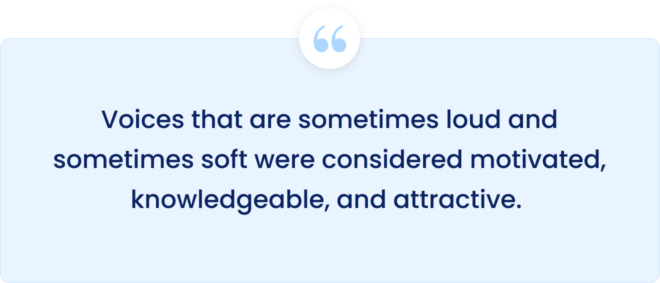
They also adjusted the speed and angle of the vote and found that higher-pitched people were more dishonest, anxious, and less believable. The low voices sounded genuine and inspiring but also seemed more effortless. While agents that were sometimes loud and sometimes soft were considered motivated, knowledgeable, and attractive.
For example, as a young leader, Margaret Thatcher wanted to raise the party by going among the public and getting the support of the people through her speech to make her party win. But her fellow members giving feedback on his voice told her that her high voice was a bit too loud.
She worked hard to reduce her pitch, and finally, her new powerful voice helped her become the United Kingdom’s Prime Minister. Margaret Hilda Thatcher was the longest-serving Prime Minister of the United Kingdom in the 20th century (1979–1990) and the only woman to have held the position for that time.
Idea 5
We can’t remember everything, so our subconscious mind fills in the gaps in our memories – but it’s not always right.
As much as we may love the memory power of our brains, our brains are not video cameras recording everything for our later recall, as too much information becomes too much pressure for our brains. That’s why instead of remembering everything, the brain adds many of our memories to our experiences so that when that experience is felt, all the essential information related to it starts to be remembered.
Important memories include friend, enemy, Hunt, and hunter. Where they are found and how to reach home safely. The ability to remember it easily in one go is inherited from our earliest ancestors.
This remembering method may help us to understand and improve things. But, it needs to be corrected because it will be difficult if we remember every memory of our life in detail. For example, Solomon Shereshevsky is famous for his fantastic memory.
He could remember the exact series of words spoken, but sometimes he did not understand the meaning of the sentences he remembered. So he starts to remember the speaker’s spoken words as well as notice their facial expressions., Therefore, next time he had no difficulty remembering the words and recognizing the speaker by recognizing the facial expressions of the familiar faces he had heard.
We usually remember small parts of our experiences. Converting similar experiences to stories helps to put everything together. Our subconscious mind does the same. It creates stories of different memories and those moments related to life.
And stores them by connecting with any experience related to that moment, so just by remembering that experience again, the whole story starts revolving in mind.
But sometimes, it can inspire us to make mistakes. Research has shown that 25 percent of witnesses pick the wrong suspect from a lineup, and 75 percent are innocent. In one such case, a rape victim chose the man she believed to be the rapist and had to go to jail for this crime.
But the actual rapist was not in the lineup. Investigating the matter thoroughly, during the DNA checkup, it was found that the actual rapist was not him but another man. The victim wrongly remembered the rapist’s face instead of correctly recognizing the image of the rapist in the subconscious, even after seeing both men.
Idea 6
Our emotions are generated from subconscious biases and sensory data, so our conscious mind cannot uncover its roots.
The human mind is not fully capable of helping us understand our feelings. It’s legacy of evolution – our ancestors’ primary motivation was to survive and breed or grow their generation, not to understand themselves, so they put little time into it.
Hence, it’s new for us to recognize and deal with our emotions. It has become difficult. This difficulty comes from the fact that our subconscious mind produces our feelings. Emotions work in these ways. The surrounding environment provides data to our senses, for which our subconscious responds physically.
It is the response that we feel in the form of emotion. But because they are produced from our subconscious, we have difficulty understanding and identifying our feelings appropriately.
For example, in research, there was the need to advertise a company’s product, so males and females were hired. The study found that men promoted by an attractive woman were likelier to call later than men.
This was because the increased heartbeat and awareness of the surroundings created an emotional response that took the form of flirtation in their conscious mind. Yet this inability to understand our feelings does not prevent us from thinking confidently enough not to share them.
When we ask ourselves why we like or dislike someone, we tend to go into details, but they are often not the right signals of our subconscious feelings. In one study, male competitors were given pictures of two women and asked which one they found more attractive.
He chose an image. The competitors were then given the same pictures again, but the female’s face was down in that picture. They were asked to examine the card again and explain why they liked only one photo. In this way, this study continued with different photographs of many other women. The direct answer of the competitors was that they looked attractive, but no one could express the true feelings going on in the subconscious.
The male competitors did not know that the researchers had swapped the pictures for the comparisons. But still, their answers were similar to the initial responses. In this way, our feelings are generated from subconscious biases and sensory data from the surrounding environment, so our conscious mind sometimes cannot understand its reasons.
Idea 7
When we defend old beliefs, we are one-sided in making decisions.

Our mind is made up of two opposite characters. We have our conscious mind, which thinks like a scientist – weighing evidence and seeking objective truth. Then there is the subconscious mind, which acts like a lawyer.
First makes the decision, then tries to prove it right. Unfortunately, our lawyer brain is the stronger of the two brains. This leads us to support the conclusions that reinforce our beliefs instead of seeking an alternative. Also, it inspires us to organize facts according to the point of view and ignore unfavorable evidence.
We all do it; even scientists are not free from such prejudices or old beliefs. They also sometimes think like this in a conscious or subconscious mind.
For example, in the 1950s and early 1960s, one group of scientists believed that the universe existed in a static state without a beginning or end, while another thought that it began with a big bang.
When radio astronomers discovered evidence of the big bang theory in 1964 and proved that the universe started with a big hit, some static state theory supporters still held on to their beliefs 30 years later without any solid evidence.
Predefined opinions or conditions also come from how we interpret information. Even when different people are given the same information, their past beliefs influence and lead to different conclusions.
Idea 8
We all think we are unique, leading us to underestimate our capabilities.
In 1959, three mentally ill men who believed themselves to be Jesus were put together in the same room. Everyone wanted to know how it would affect their self-perception. When they were brought out a few days later, one gave up his faith and accepted himself as an average person.
One accused the other of being a seducer, while the third still firmly believed he was Jesus. Thus, despite the evidence, two out of three retained their imagination, still considering themselves Jesus inside.
This sounds strange. But like the example, we also try to show ourselves as memorable. So that others respect. This happens due to the desire to express ourselves with a great self-image. People often do this when their views differ from general people. For example, one study found that 75 percent rated themselves as average or above average among high school seniors, while 25 percent considered themselves top performers.
However, only 5% of those students were able to become toppers. Such self-made illusions also remain in the coming life, sometimes taking people away from reality. That’s why a study found that 94 percent of college professors consider their work above average while teaching average.
Unfortunately, our exaggerated view of ourselves is different from reality. We can do better and faster than the way things are happening. In this way, being more optimistic than expected in many places makes a difference in the results.
Often because of this, projects like new buildings and infrastructure go over budget because planners aim to complete them in less than enough time. For example, the US General Accounting Office estimated that only 1% of new military technology purchases were delivered ahead of schedule, which could not happen in reality.
We disagree that it’s our fault. Development has always taken the favor of people with self-confidence and demanded to be respected by being memorable.
It has been essential to our survival and growth as a species. Without this, we would have remained a fixed society, never tried for development, and would probably still be turning stones into tools.
So the lesson is, continue learning by considering yourself memorable.
Idea 9
Our subconscious mind compels us to be sociable because the consequences of exclusion include illness.
Before we can talk or walk, we are attracted to friendship and repelled by enmity. Children like to touch the faces of those they see helping others, and those who harm others, tend to shoo away. This proves that it is in our nature to be sociable, mingle with people, and make friends. And our brains are equipped with hardware to help us do this.
The body part named the neocortex helps us with this. The neocortex is the newest part of the brain that helps us understand relationships between people. We can use these skills in society because we have what scientists call the theory of mind. Only humans have the excellent ability to understand who everyone dealing with them is, how they are all related to each other, and what each person wants from each other.
Researchers have shown a direct correlation between the neocortex ratio in the brain and the size of social species groups. That’s why gorillas live together in groups of ten, macaques and monkey species in groups of 40, and the average group of humans consists of 150 people.
This includes close friends, family, relatives, and those with whom we are connected. But what if we are no longer sociable or we are left alone? Exclusion or loneliness causes not only a disturbing feeling of separation from society, but we feel physical weakness as well.
Physical pain hits us with a two-pronged attack. This triggers an upheaval in both our senses and emotions. But the exciting thing is that the part of the mind linked to this emotional factor – the anterior cingulate cortex – is the same area where social pain occurs. This means we may take painkiller medicine to reduce our feelings of exclusion or loneliness.
But along with this, it has also been proved that social exclusion or loneliness increases the chances of high blood pressure, obesity, and shortening of life. That’s why our subconscious mind pushes us to be sociable to stay physically, mentally, and emotionally healthy.
Idea 10
Social behavior is determined by the brain’s chemicals and subconscious habits.
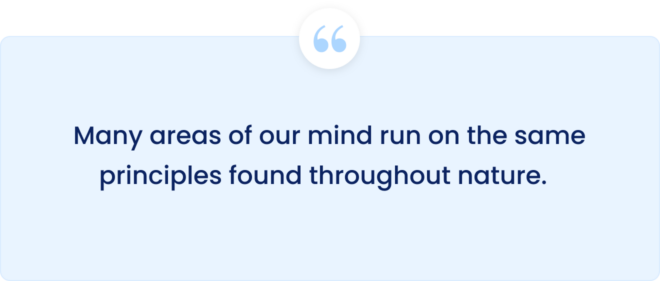
Scientists and philosophers have been proving for a long time that we are unique as human beings. This is the only species that understand difficulties as we do. Yet we are not as remarkable a species as we think. Manyany areas of our mind run on the same principles found throughout nature.
The chemicals of the mind govern the behavior of both humans and animals. For example, releasing certain chemicals in the mind gives us the power to trust. Yet many species and humans sometimes rely on and love and sometimes don’t.
For example, a female ewe usually gets angry at her kid when he wants to drink milk, only when she is very fond of them when giving birth. But after birth, she reverts to her old angry form. This is all due to the on and off of protein chemicals called oxytocin in her brain, which women also feel during childbirth.
Humans produce oxytocin during sexual intimacy and even in a hug, a happy hormone that makes us feel good. It is not just chemicals that decide how we interact and behave consciously, but we also follow subconscious behavior patterns like animals.
The researchers wanted to find out how obedient people are under normal conditions. For this, in a library, a researcher asked people to use their photocopiers and if they could use the typing machine in front of them. Without much discussion, 40 percent of people refused. But when the researcher offered other people a reason to use the device, the refusal rate dropped to six percent.
Thus, we conclude that we follow a set of subconscious rules like a computer program. When a conversation is made with us, usually, we talk according to the discussion of the other person, and we only agree once a reason is given. Thus, instead of being the complete master of our lives, our maximum behavior is determined by factors over which we have little control.
Idea 11
People rely on stereotypes and labels that influence how they view others.
Do you think you are fair and open-minded? Many of us take pride in these qualities. But unfortunately, our thinking is some unclear prejudices or previously formed beliefs. One of these prejudices is how we start an opinion about someone’s character based on their outward appearance.
For example, one study found that if people see one shopkeeper unshaven in tattered or dirty clothes and another wearing tie and pressed clothes, they judge them accordingly. In the study, the researchers learned that people treated with wrinkled or dirty clothes had many shortcomings, while people who wore nice clothes were seen correctly. In this condition, you saw how people behaved like this under the influence of subconscious feelings. This is just one; apart from this, many prejudices buried in our minds are difficult to detect.
In a study by the Implicit Association in the US, people were shown some photos on a screen in a test and were asked to comment on them. One shocking result of this test was that 70 percent of people associated black people with words like failure and white people with success. That proportion also includes many people who consider themselves non-racist, i.e., black. This is not the only example of these hidden prejudices.
These prejudices affect our society. Those prejudices inspire us, knowingly or unknowingly, to label older people as careless or retarded, or women as less capable than men. The media and culture help spread such prejudices. This phenomenon is going on in society so effectively that much effort must be made to avoid it.
The first and most crucial step is to identify those prejudices. We can prevent these judgments or prejudices by spending more time with the people we label because being together brings feelings of understanding and working together, which helps to override the labeling. The final lesson is that we cannot control our subconscious mind, but we can try to manage it.
Idea 12
The habit of identifying with groups fosters prejudices in favor of group members and against nonmembers.
We all have groups that we feel we belong to. These groups include gender, nationality, politics, and religious belief. We change our identity depending on the condition in which we find ourselves. For example, the residents of New York were divided into distinct groups by factors such as wealth and race, which separated people.
But, when the World Trade Center was attacked, people saw these identities melt and come together. To become more robust, everyone started seeing themselves as New Yorkers. Our thoughts match a lot with the people of our group, so we often consider ourselves connected to the opinion of the members of that group compared to other groups and readily agree.
For example, a study of professionals such as doctors and hairdressers found that they all rated their professions higher than those in other professions for their choice and diversity. Our attachment to the group also motivates us to excel or feel better than the members of other groups.
In research, two such artists, Wassily Kandinsky, and Paul Klee, were called to perform live. One was asked to achieve the best and the other to perform average. Usually, the best performer should have been liked by the audience, but it did not happen; the audience of other singers supported him even on his average performance and liked him only.
This example shows that being part of a group gives us psychological comfort, and we show prejudices towards people who are not group members. Whether your group is correct doesn’t matter; we always knowingly or unknowingly favor our group over others.
Idea 13
From what we buy to whom we vote for, we base our choices in life

No one would have thought that the weather or the pronunciation of a company’s name would affect its stock performance. But they do. Companies whose names are difficult to pronounce are more likely to fail than companies whose names are easy to pronounce. Many of our purchases are made based on such small reasons.
These are the reasons about which we are sometimes unaware. For example, in one experiment, background music in a club influenced customers to buy different country liquors. When a French song was played on stage, most people bought French wine; when a German song was played, more German wine was purchased. When asked, the customers denied believing it, but subconsciously, they were influenced by it.
It’s not just in our purchasing habits. Even we choose political parties based on political positions instead of their policies based on how their prominent leaders appear. An example of this is that to make the results of the election in their favor, the political party fields a person who is famous and liked by the people as the leader of their party.
Conclusion
So friends, the book’s central message is that we are often unaware of what our subconscious mind is doing all the time – for example, it is always doing something to avoid danger, find food, or become powerful.
It has evolved to work in this way, but it also means that we cannot understand it, but through it, we can remember the events that happen to us with accuracy. Due to its created prejudices, we consider it comfortable to be in a specific group.
Practical life ideas we learned from the book. Use body language to make decisions in your favor. If you look at someone’s eyes while talking, look at their eyes and other parts of their face while listening, you can exert influence. It reflects the mentality of subconscious power so that the person in front subconsciously experiences your power. That’s why we talk to others by making eye contact.
Calm your body and mind before making important decisions. If we are late in going to work, our body produces adrenaline hormones, so our conscious mind starts making some such decisions about work, about which we are generally unaware. Additionally, recently happening events and physical activities affect our current choices.
So when we are nervous or scared of some event, subconsciously, we start considering ourselves less attractive, even if we try to express our happiness with a fake smile, but a fake smile is not enough to win the hearts of others.
That’s why I make essential decisions by being relaxed. Buy goods based on quality, not by being influenced by the surrounding environment. Most people prefer to drink wine while a song related to drinking is playing in the club, while when the music is not playing, the printed menu with flowers inspires people to eat food.
Apart from this, we get influenced by attractive packaging and think it will mean good quality products inside it, but in reality, sometimes the goods are not better than attractive packing.
Subliminal Book Review
“Subliminal” by Leonard Mlodinow delves into the unconscious mind’s influence on human behavior, revealing how our decisions are shaped by hidden mental processes.
Mlodinow explores the power of perception, biases, and social cues that steer choices. Engagingly written, the book sheds light on the complexities of our subconscious, offering a thought-provoking journey through neuroscience and psychology.
It underscores how much of our actions are guided by forces beyond awareness. While occasionally dense with scientific concepts, “Subliminal” ultimately offers a captivating perspective on the subtle forces shaping our lives, challenging readers to reconsider their understanding of decision-making and human nature.
Thank you, guys; I hope you liked this summary. Thank you so much.
Contents

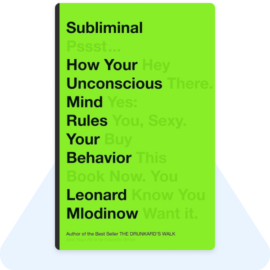

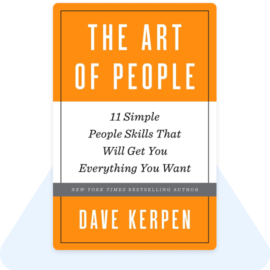
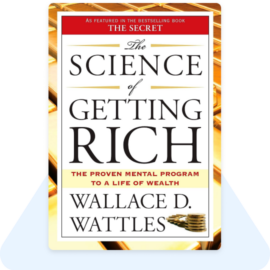

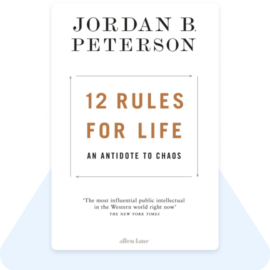


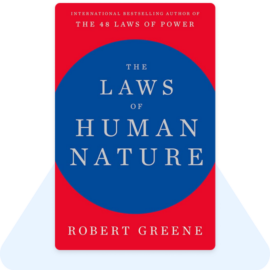

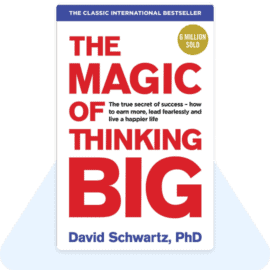
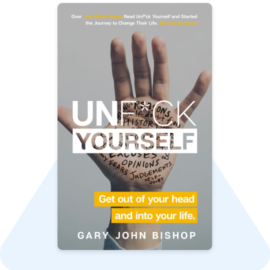

Thanku so much sir for providing book book summeries… Gratitude 🙏
I have learned to so many practical life ideas from this books.
This book also helps us to understand the other person state of mind.. From body language and eye contact.